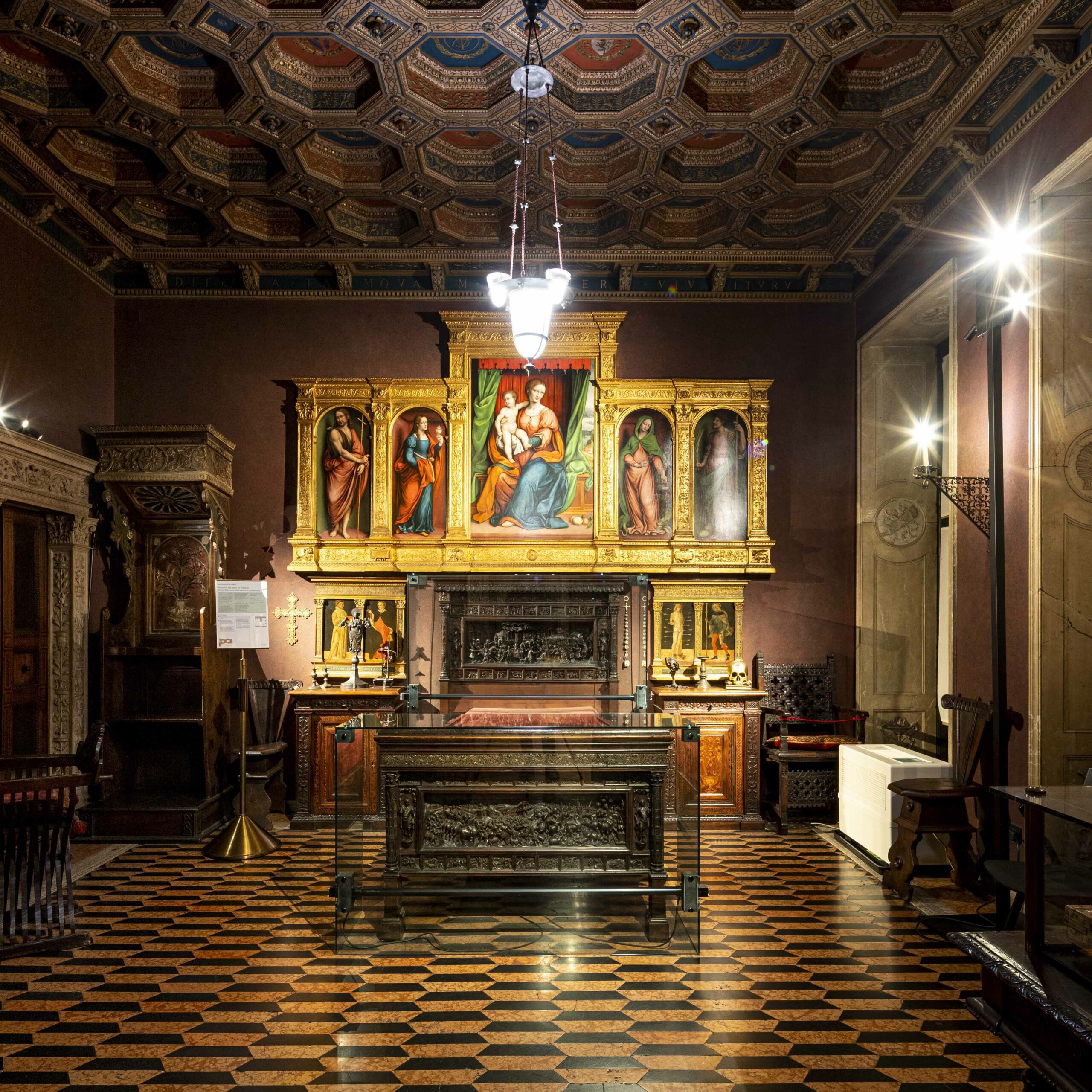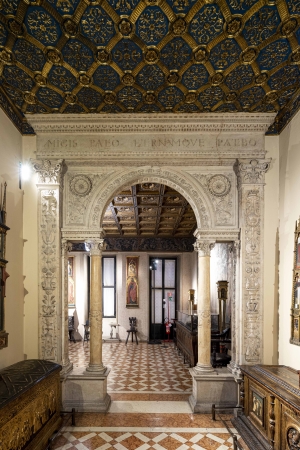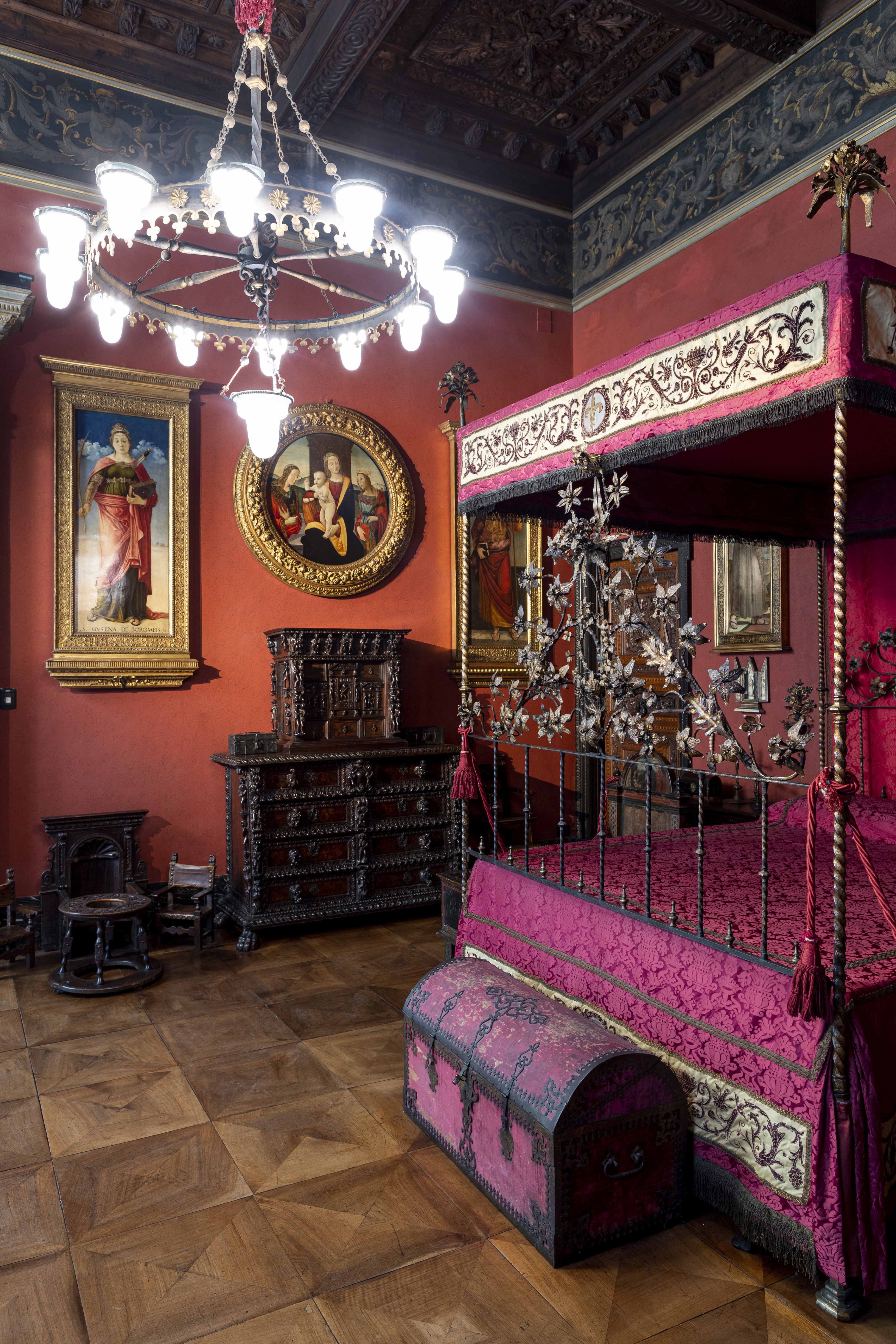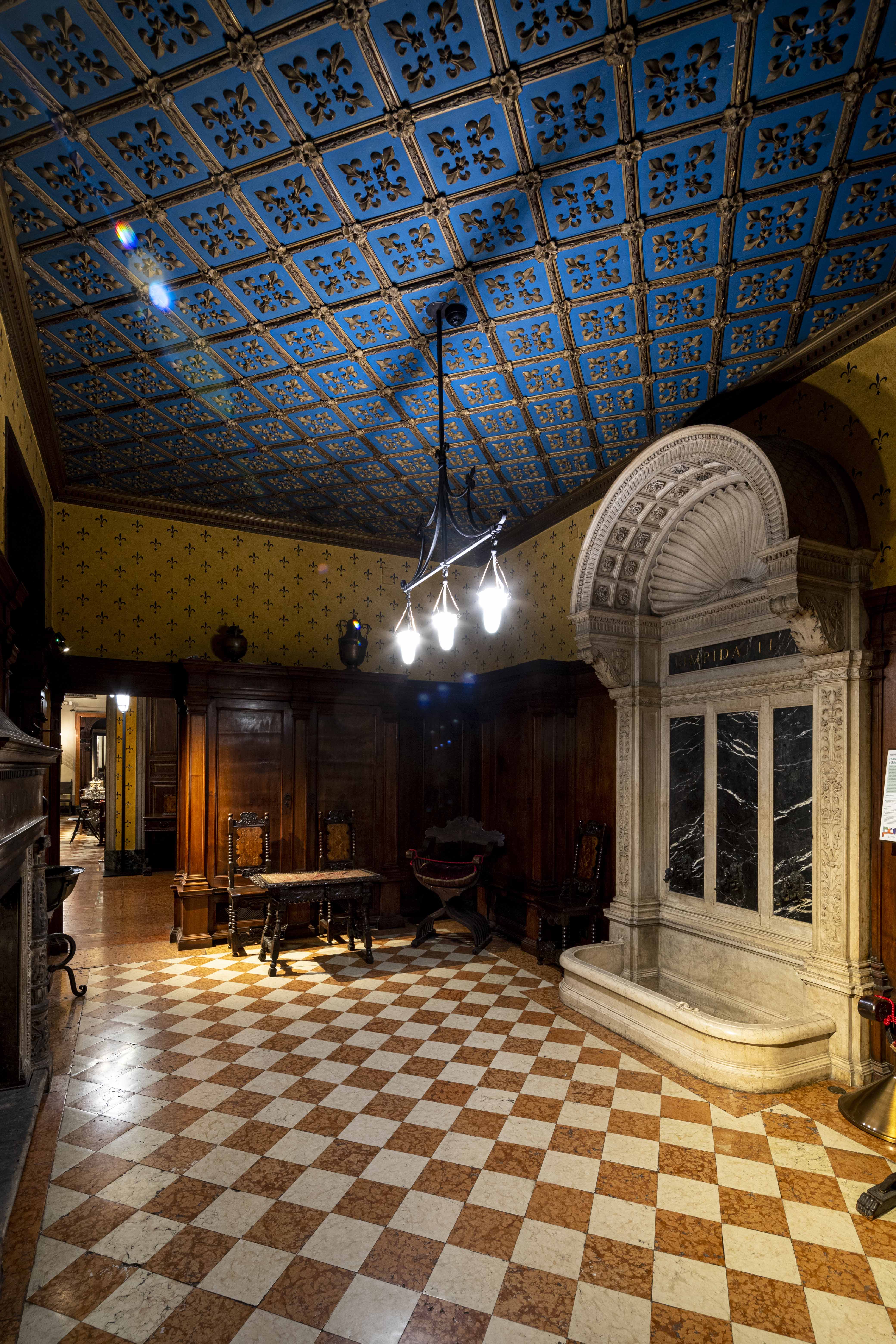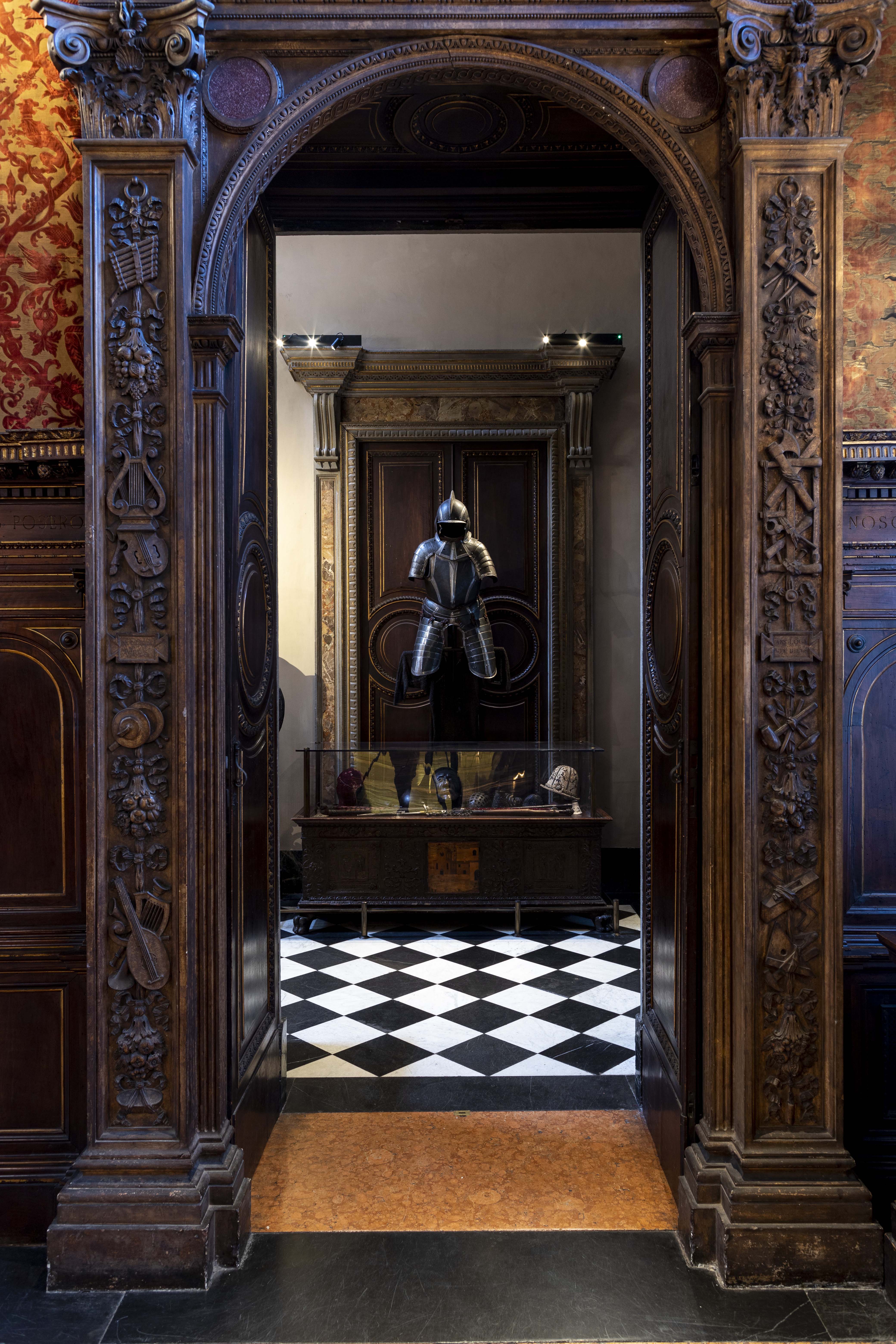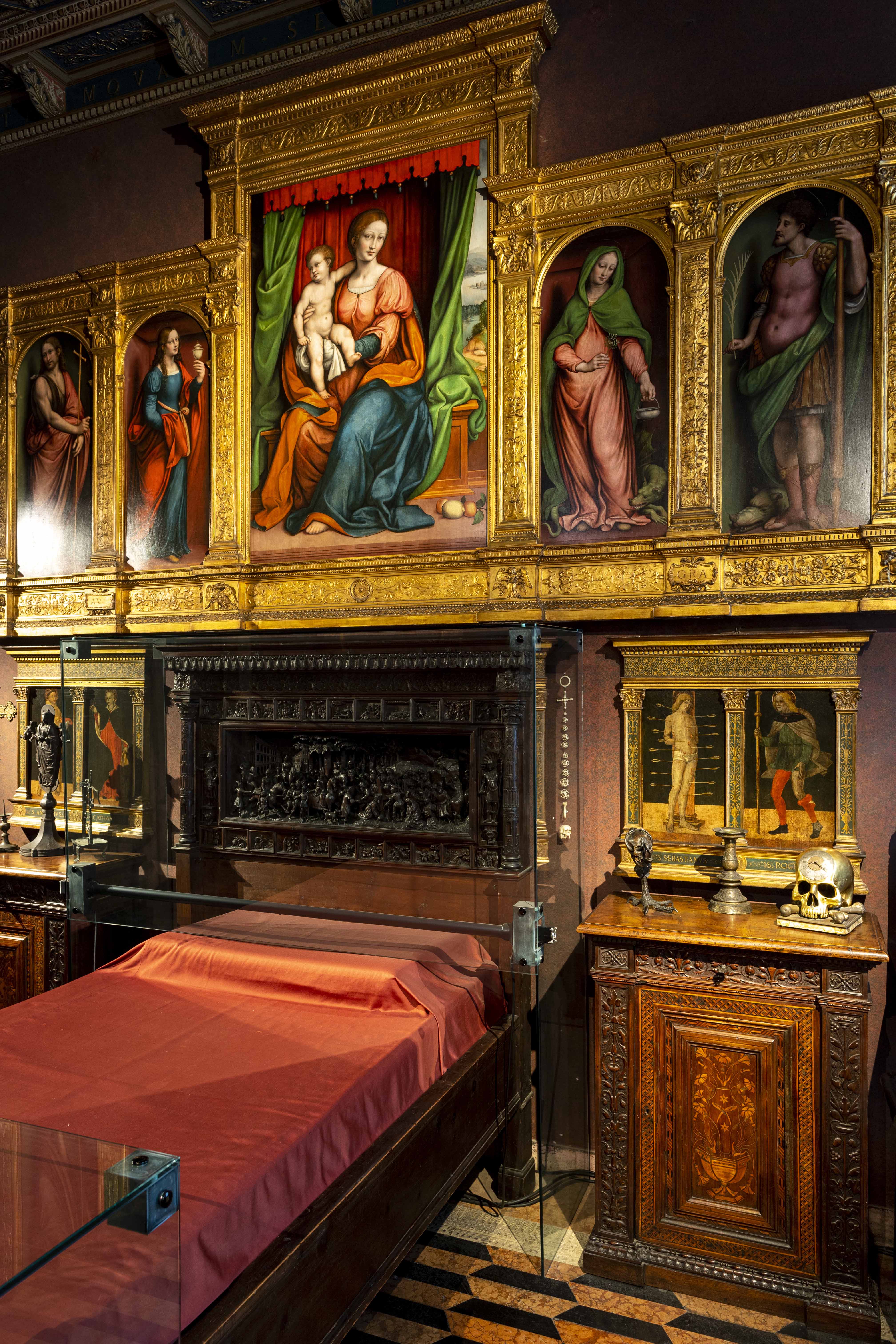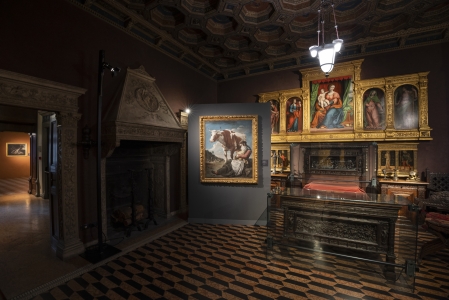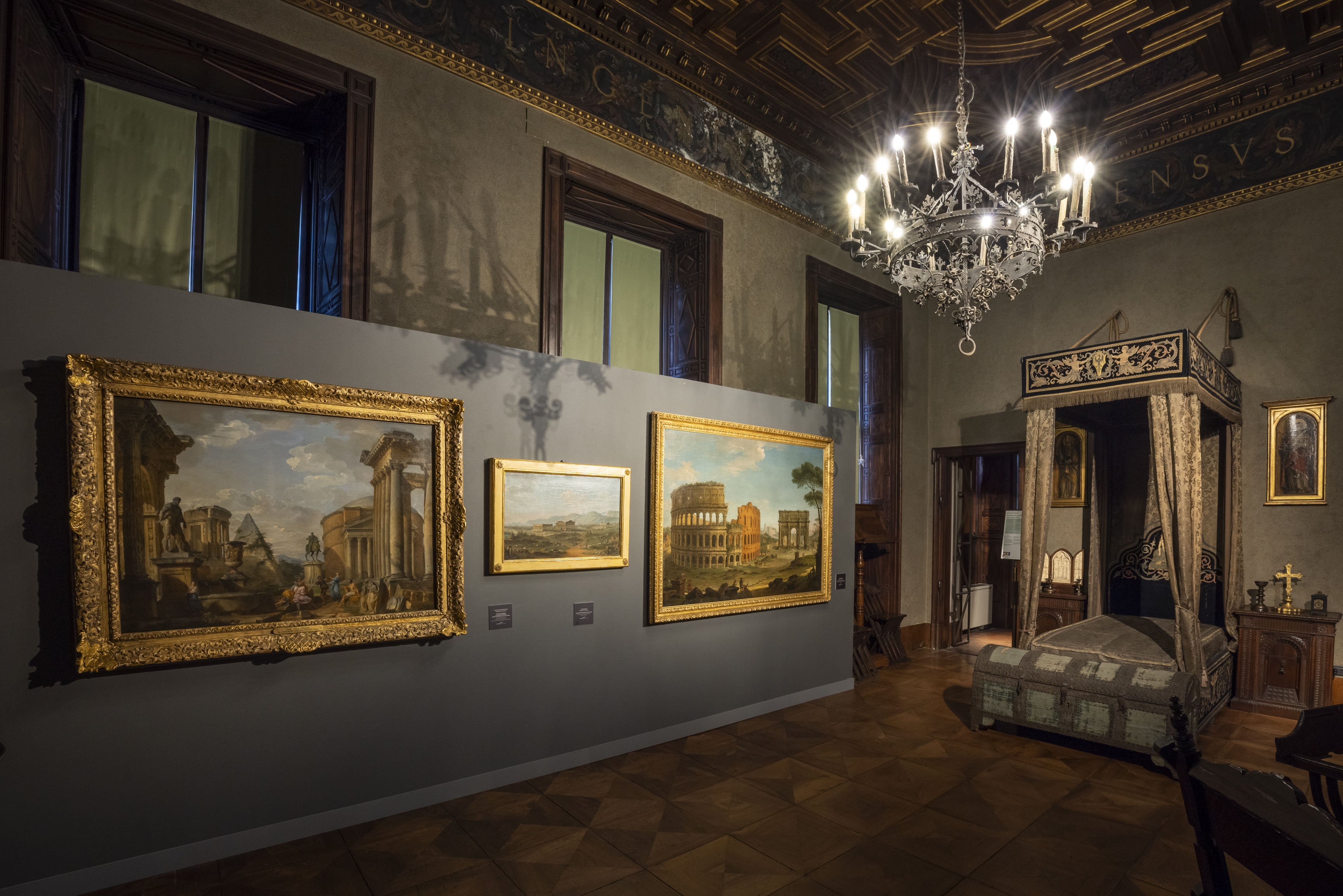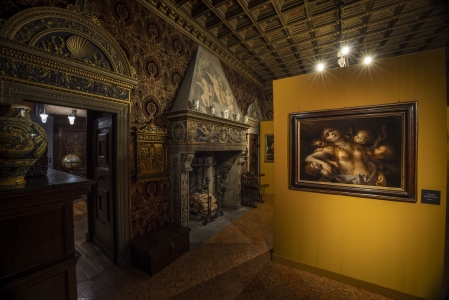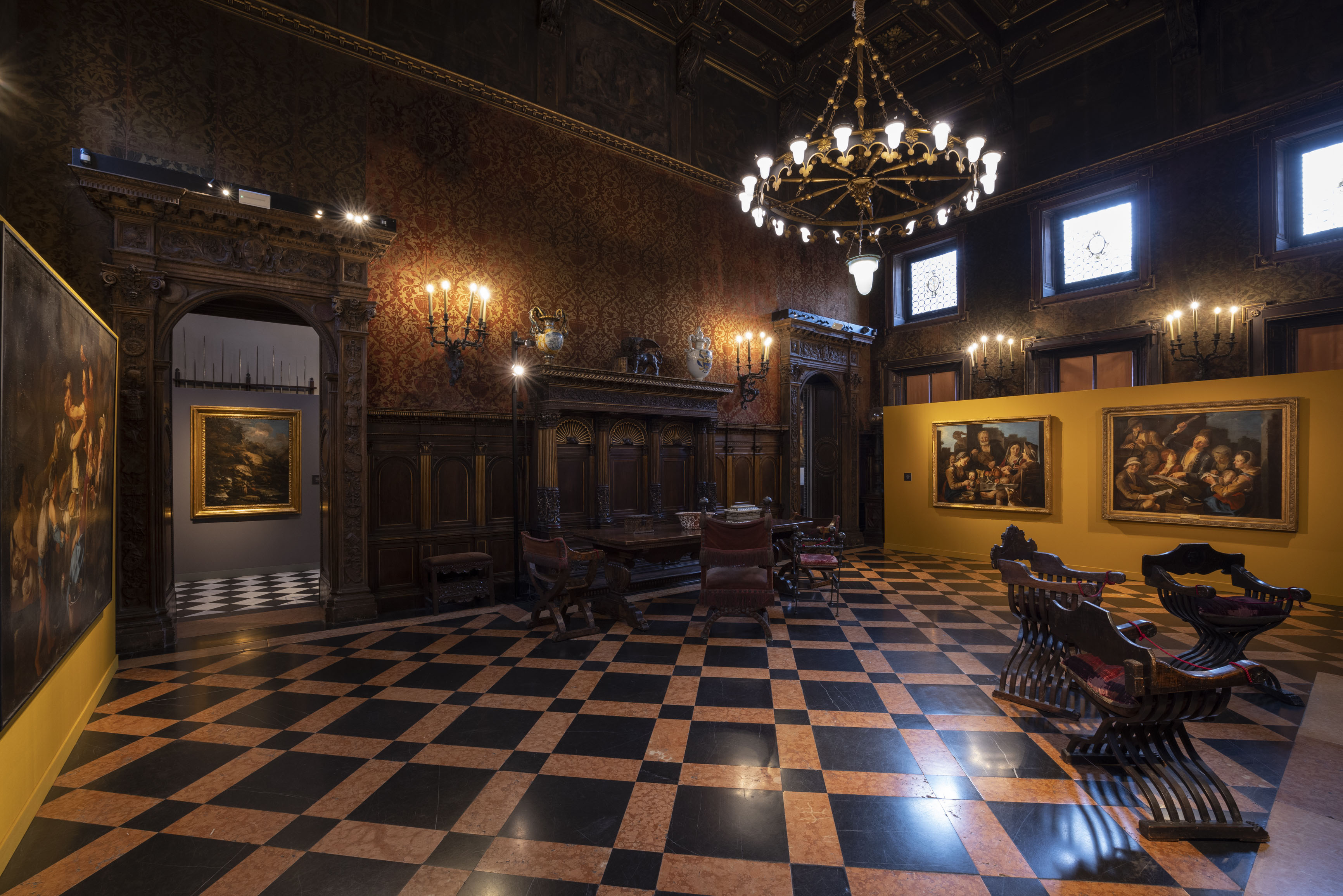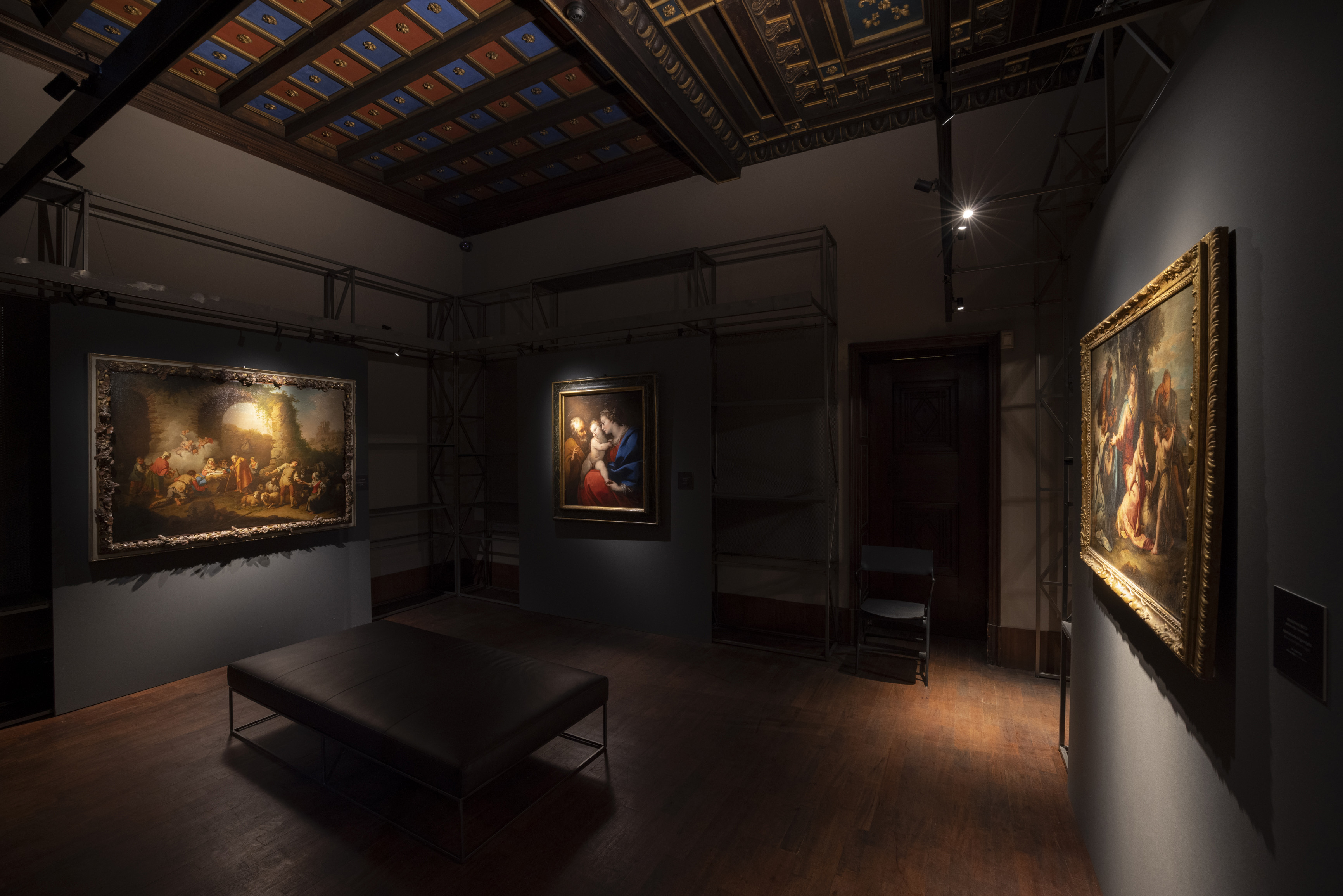Interview to Antonio D’Amico,
Curator of Museo Bagatti Valsecchi
Who are the brothers Fausto and Giuseppe Bagatti Valsecchi, and how did the idea for the collection and the house museum come about?
Fausto and Giuseppe Bagatti Valsecchi were born in the early 19th century and belonged to the upper middle class of Lombardy. They lived in a beautiful palazzo in the heart of Milan, between Via Gesù and Via Santo Spirito. They were lawyers by training, but with a great passion for art, mainly Renaissance architecture. Indulging this passion, they decided to devote themselves to the renovation of the family mansion, pursuing their artistic ideal, thus according to a neo-Renaissance taste and style, very much in vogue at the time in Europe and thus in Milan, towards which many families of the Milanese industrial bourgeoisie and aristocracy were oriented. The Litta family, for example, also invaluable collectors, always in this cultural spirit, until 1865, kept in their art collections as a work given to Leonardo the Madonna later called Litta, sold to Tsar Alexander II of Russia, and today in the Hermitage in St. Petersburg. This is how Casa Bagatti Valsecchi came into being, with the primary intention of being a place where original elements of the Renaissance, which developed in northern Italy from the second half of the 15th century, come together harmoniously with furniture, objets d’art and paintings found on the antiques market – see the marvellous Flemish 16th century tapestries, the extraordinary table of Santa Giustina by Giovanni Bellini, the mysterious portrait of the Blessed Giustiniani by Gentile Bellini, and again Bernardo Zenale and the beautiful altarpiece by Giampietrino – with new elements that complement the originals, created by skilled craftsmen, artists, architects, who do not want to be a mere copy of 15th- and 16th-century models, but creatively original works. The result is a house of Renaissance inspiration, but with 19th-century forms and proportions.
By what criteria were the objects that enrich the art collection purchased?
The brothers moved freely in the antiquarian world of Northern Italy, especially Lombardy and Venice, although their relationship with gallery owners, auction houses and experts is still fully to be studied. Initially they bought for entire lots, which could include original objects as well as imitations that they put back on the market. Their aim was to create a house to be lived in – and in this spirit it is administered today – but with all the comforts that came with the latest technological innovations, i.e. heating, running water, electric light: the Bagatti Valsecchi family were the first private individuals in Milan after La Scala to have electric light, and in fact the house had the first shower built in Milan. Their reconstruction project included all those artefacts of art, design, but also the common and domestic use of a house, so paintings, furniture, textiles, ceramics, but also crockery, glasses, plates, locks, keys, wall sconces, all strictly in the neo-Renaissance style, which remained so until 1976, when Pasino, one of Giuseppe’s sons and heir to the family collections, left the palazzo as his home and set up the Bagatti Valsecchi Foundation.
The taste of the Bagatti Valsecchi house is an exceptional neo-Renaissance artifice. How does this fit in with the masterpieces that furnish it?
Everything has the same importance and function, the masterpiece as the design object in neo-Renaissance style, in a context intended to be dynamic, multifaceted, of eclectic harmony. Reliving a taste and a historical period out of time is also of the aristocratic and upper middle-class world of the 19th century, where they reconstructed environments, historical events, organised playful gatherings, to give life to a world that was magical for them and that had to be all-encompassing. Fausto and Giuseppe had the extraordinary ability to make everything very harmonious, to succeed in integrating the period object with the design one, in the furnishings as in the architecture of the house, such as the antique piece that becomes the door jamb, or the Valtellina altar that, adapted, turns into a bed. Thus the compasses, the armillary sphere, the skull and the hourglass, arranged like wunderkammer objects, are actually tools for recreating the 15th and 16th century environments from which they take their inspiration; or the Latin inscriptions that decorate the rooms – and which in the Renaissance were a reminder of perfection, harmony and measure – become a way of helping life inside the home, like the phrase freely inspired by Saint Augustine on the fireplace in the Stufa Valtellinese room: “He who loves to speak ill of the absent, let him know that this hearth is precluded to him”; or like the inscriptions on the ceiling in the Sala del Passaggio del Labirinto (Labyrinth Passage Room), inspired by the 16th-century Stanza del Labirinto (Labyrinth Room) in the Palazzo Ducale in Mantua, are a warning to live life in virtue.
What models did Fausto and Giuseppe Bagatti Valsecchi refer to when setting up the house?
They had no artistic advisors or curators. The house was their own idea and their own project that they carried out independently. In addition to Renaissance architecture from Lombardy to the Veneto and Emilia, the Bagatti Valsecchi family had built up an important photographic archive of almost 4,000 images, which is still being studied, where we find, for example, many architectural and artistic elements that we can deduce were a model for them to show to their craftsmen for the creation of the objects that furnished the house, such as the chandeliers clearly inspired by 15th-century altarpieces. The library is also rich in reference texts, such as some French repertories of 15th- and 16th-century decorations that were used to recreate the tapestry of the Bevilacqua Room and the Hall of Honour. The Museum also keeps an archive of drawings – fundamental and in part still unpublished, on which we are currently working – because the brothers, in addition to being the creators of the house, were primarily restorers in the 19th-century sense, that is, creators and designers: theirs, for example, is the reconstruction of one of the doors of the Castello Sforzesco in Milan, as part of the restoration work begun at the end of the 19th century, and much more. An aptitude for art that runs in the family, such as Pietro, Fausto and Giuseppe’s father, a painter and skilful miniaturist, and Pier Fausto, Giuseppe’s son – the only one of the brothers to be married – an architect and refined illustrator. His precious travel diaries around Europe give us, in addition to an accurate description of the places he visited, drawings of great artistic quality, of neo-Renaissance style palaces built in the late 19th and early 20th century, of copies from life of paintings, sculptures, but also objects such as armour, preserved in museums, which then served as a repertoire for the house in Milan.
La Seduzione del bello – The Seduction of Beauty – is the title of the exhibition that the Museum is hosting until 12 March 2023, where around fifty masterpieces from the Gastaldi Rotelli collection are presented. What is the common thread linking this refined collection to the Bagatti Valsecchi?
The Bagatti Valsecchi Museum was founded in 1994 as a place to house the collections gathered by Fausto and Giuseppe. With this exhibition we wanted to emphasise how private collecting is still important and flourishing today. Our aim was to create an exhibition itinerary within the house in dialogue with the identity of the individual rooms, with works that were in harmony with the Bagatti Valsecchi collections, but from a different era, and to keep alive the spirit of hospitality that has always distinguished the family, offering itself as an exceptional residence that hosts other private collections. This exhibition with fifty paintings from the larger collection of the husband and wife Gilda Gastaldi and Giuseppe Rotelli, with canvases by artists working in Lombardy and Veneto between the 17th and 18th centuries, fits into this context. A collection built up over twenty-five years, which after the death of Giuseppe Rotelli in 2013 – founder of the San Donato Hospital Group – his wife Gilda Gastaldi continued and expanded. Born with a late 16th-century imprint – on display paintings by Giulio Cesare Procaccini, Tanzio da Varallo and Giuseppe Vermiglio -, it then embraces the 17th century – among the artists Francesco Cairo, Bernardo Strozzi -, and the 18th century, representative of the taste of both: that of Giuseppe with a predilection for landscape painters, such as Francesco Guardi, Michele Marieschi, Giovanni Paolo Pannini and Antonio Joli -, and that of Gilda for the painting of reality tinged with social and political awareness, with a particular focus on the stories of the ‘pitocchi’, i.e. the last and the children, including Pitocchetto, Giacomo Ceruti, Monsù Bernardo. All works of extraordinary taste and quality. The exhibition therefore stems from this desire to bring together two worlds that are private and that dialogue with each other with the identity of the Museum’s rooms, in an absolutely new itinerary that for the first time includes all the rooms of the Bagatti Valsecchi Museum.

